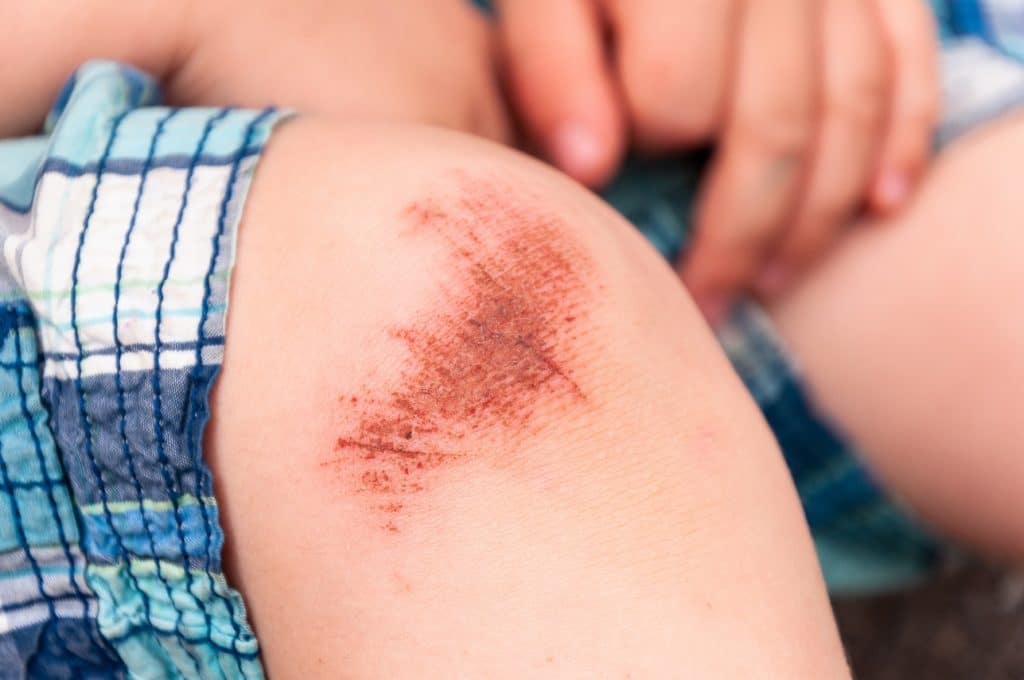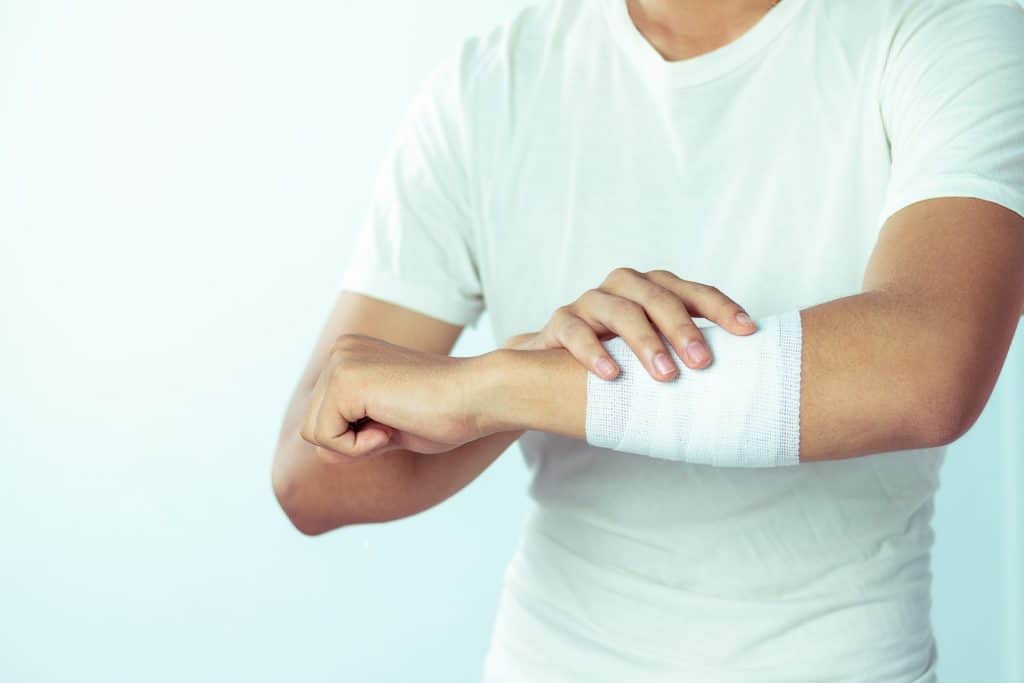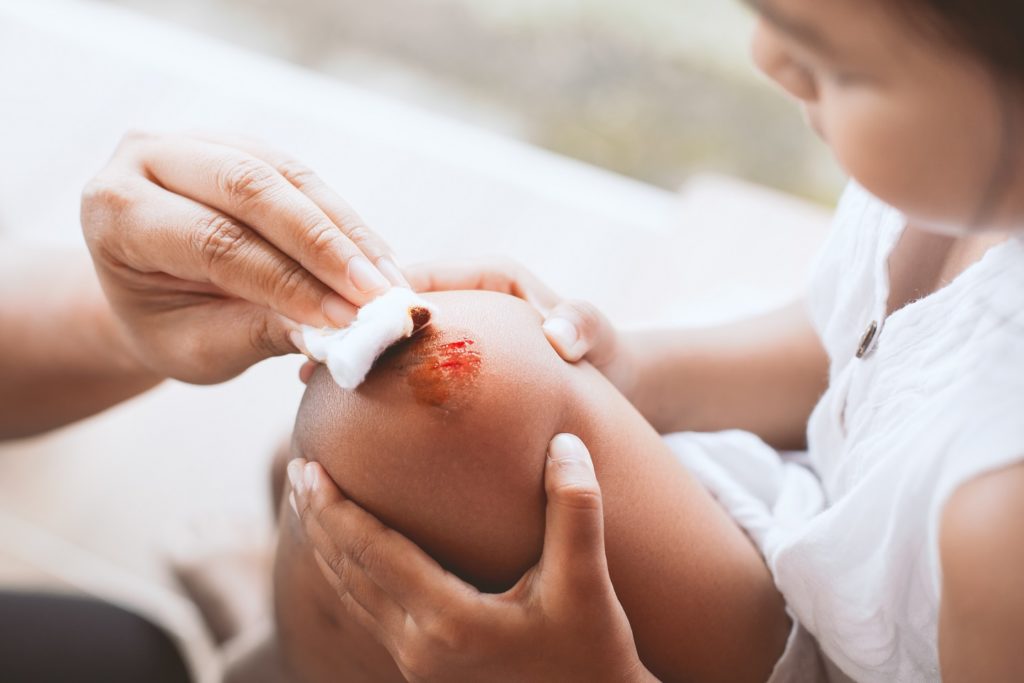If a wound closes, we refer to the as a wound-healing, as the damaged body tissue by new tissue. This is a self-healing of the body, which can be medical, for example, Ointments, but also by the custom behavior of the Affected. However, Wound healing can stop, so that the injury is a chronic wound, which can be dangerous.
Table of contents
Healing wounds – The most important facts
- Wound healing is (for example, in contrast to operations) is not an artificial process but rather a biological process.
- It replaces destroyed tissue by newly formed cells, blocking pathogens, and builds new layers of skin.
- The new tissue is not identical with the Old, on top of that, it is of the suture is less elastic. It is a scar forms.
- Medical treatments do not cause healing, but to encourage you. They ensure a germ-free environment and a warm and moist environment in which the tissue can optimally build.
- During healing, it may lead to complications. Risk factors range from careless behaviour of the Affected people, which are straining the wound too early and too strong to diseases such as hardening of the arteries (atherosclerosis) and Diabetes, which impede the healing process. It can also develop chronic wounds such as bedsores (pressure ulcer).

How is a wound healing?
It separated tissue together again. This process begins immediately when a person (or animal) got hurt. The blood platelets set themselves to the damaged tissue in order to close it.
What is medicine power?
The curative effect is not triggered by the medicine; rather, they accompanied this by creating an environment in which the healing in the best way possible are progressing. It is usually associated with pain, which Doctors can be alleviated by administration of analgesics or repealed.
The medicine is always to promote the efforts which the healing process so that after the completion of the healing, no scar. However, the appearance of the scar not only to the aesthetic aspects, because if they adhere poorly, can hinder you to be Concerned, even after successful healing.
Modern medicine prevented with vaccinations life-threatening complications that may be caused to the wound, such as tetanus. Dpch, a blood poisoning caused by the wound, and within a short period of time to the death of the person Concerned, as infectious germs that form in the wound, into the bloodstream. Foreign particles could have entered the wound, for example, in the case of an accident, disinfection is essential.
The wound is large and open, as in the case of a long operation of cutting, sealing, the Doctors, the wound edges by sutures, staples or glue. After this initial supply of the medical staff cares for the wound. At regular intervals, the nurses or orderlies to clean the sick the wound and its surroundings and change the wound covering, which is done by patch or associations.

The phases of healing
Wound healing is proceeding in a number of successive phases, where in the world of medicine is no Consensus on how these phases separated from each other. Roughly speaking, we distinguish between the cleaning and anti-phase, immediately after the Emergence of the wound, the granulation phase and the regeneration phase.
In the inflammatory phase the wound is bleeding heavily – blood vessels are destroyed. This bleeding can be due to the blood loss in large wounds dangerous to life, but at the same time, the positive effect of foreign body from injury to be washed, which could infect the wound.
The blood vessels constrict quickly, so that the blood flow stops. Subsequently, the blood dilate blood vessels, the skin in the area of the wound reddens and the temperature of the place rises.
The capillary walls are able to migrate through permeable and blood cells increased in the wound region. From damaged lymph vessels, lymphatic fluid occurs. This extra fluid causes the tissue to swell around the wound. Now of fluid from the wound (wound exudate), and washes the broken tissue, foreign bodies, pathogens and germs. This Phase lasts for several days. Biochemically, the immune system is considered in this inflammatory phase (in two ways). Since it kills first bacteria, viruses, and other pathogens, and secondly, the self-healing.
The Granulation Phase
After the inflammatory phase, collagen fibers form and build new connective tissue to the wound. In this cells are deposited, thereby forming a granulate, a “granular tissue”. This fills in the wound from the inside and ensures that it contracts and closes.
How successful this process is depends on the physical Constitution of the person Concerned. People who are under – and/or undernourished, can form the fabric of the granules only slowly. This is also true for those who suffer from metabolic diseases or their biochemical systems have taken, for example, by alcoholism damage. The formation of the tissue is a highly complex process. So, the fibroblasts, mucopolysaccharides, and on which the loose (collagenous) can develop in the connective tissue produce.
In healthy people, the new tissue, in the case of small wounds, within a few hours. In the case of tiny wounds, the tissue formation takes place within minutes, while it can take in the case of large wounds, for weeks, until a sufficient number of new binding the wound tissue fills in. This Phase, in which the granules filling the wound, usually starts from the second day and until the end of the second week of wound healing. In the case of larger wounds, a continuous tissue is formed from the sixth day of the collagen fibers.
The Regeneration
In this Phase, we prepared the deck fabric. The interface closes as soon as the wound is filled with enough granules to a Shrink, for the greater part, however, by newly formed cells on the surface. The cells migrate from the edge of the wound in the middle.
Smoothly the Regeneration works, when the environment of the wound moist and warm, because new cells can easily drag in the wound. The wound dries out, however, delayed the healing process. The regeneration process can be Ointments and moisturizers promote.
The granulated tissue builds strengthens collagen fibers and restores in this way, the layers of the skin, until a new skin layer is formed on the surface. As new tissue replaces destroyed tissue layer, the skin as before, resulting in formation of a scar, which has no elastic fibers, felt. To protrudes this from the surrounding skin, but it sinks in later, once the tissue tightens. Initially, the scar is in its appearance of red, but turns after about a year-and-white. In addition, you will be more resilient and the collagen fibers strengthen.
Disorders of wound healing
A medical escort is only necessary because the healing can be easily obtained by external and internal factors disturbed. The consequence of ugly scars and chronic wounds, in dire cases, even infections which may become life-threatening.

What can you do?
In the case of a large wound that is bleeding heavily, consult a doctor immediately. In the case of cutting and lacerations, you would first stop the bleeding. Take a clean piece of fabric, best gauze, of cotton or gauze and press it into the wound.
The wound, such as, for example, a wound should be soiled at the knees as a result of a fall from a bike, so these must first be cleaned thoroughly, so that infections are prevented and healing is accelerated. This is a clean, lukewarm water soaked, cloth. Larger debris such as pebbles are stones in the wound, remove it with tweezers. Caution: a particle deep within the tissue or can be difficult to remove, leave it to the doctor to remove these.
After cleaning the wound, you should be creaming them with an antiseptic ointment as soon as the wound is dry. In this way, you prevent infection.
The wound covers a larger area, is deep or dirty, you will definitely seek medical help.
For the healing of the wound moist and warm climate is recommended. This you create small wounds a band-aid, in the case of larger by a wound dressing. In this micro-climate, a low pH protects value against pathogens. The tissue regenerates faster, the wound remains elastic and there is less of a hard scab that can break open and ongoing wound healing. The wound is moist, they suffer hardly any pain and tension. You can support the Regeneration also breathable ointments which ensure that the wound dries out. (Dr. Utz Anhalt)
